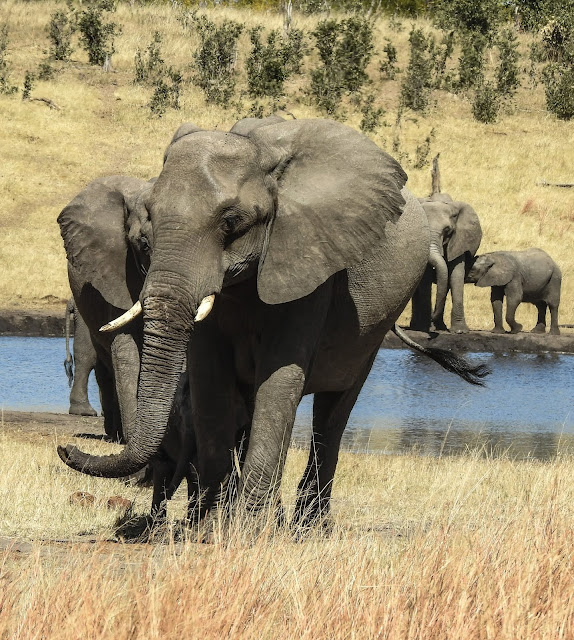This Blog contains Wildlife and Bird Photos from Walks, Safaris, Birding Trips and Vacations. Most of the pictures have been taken with my Nikon P900 and P950X cameras. On the right of the page are labels for each species of Bird/Animal etc. Click on a label and it will show all of the photos taken for that species. I am adding information for each species from sources like Wikipedia. To see any pictures at a large size just click on the image.
TOTAL PAGEVIEWS
TRANSLATE
Wednesday 10 July 2019
28-5-2019 SOMALISA CAMP, ZIMBABWE - YELLOW FRONTED CANARY (Crithagra mozambica)
The yellow-fronted canary (Crithagra mozambica) is a small passerine bird in the finch family. It is sometimes known in aviculture as the green singing finch.
The yellow-fronted canary was formerly placed in the genus Serinus, but phylogenetic analysis using mitochondrial and nuclear DNA sequences found that genus to be polyphyletic. The genus was therefore split and a number of species including the yellow-fronted canary were moved to the resurrected genus Crithagra Swainson 1827.
This bird is a resident breeder in Africa south of the Sahara Desert. Its habitat is open woodland and cultivation. It nests in trees, laying three or four eggs in a compact cup nest. It has been introduced to the Hawaiian Islands, where it is found on western Hawaii, southeastern Oahu and Molokai.
The yellow-fronted canary is a common, gregarious seedeater. It is 11–13 cm in length. The adult male has a green back and brown wings and tail. The underparts and rump are yellow, and the head is yellow with a grey crown and nape and a black malar stripe. The female is similar, but with a weaker head pattern and duller underparts. Juveniles are greyer than the female, especially on the head.
Its song is a warbled zee-zeree-chereeo.
Tuesday 9 July 2019
28-5-2019 SOMALISA CAMP, ZIMBABWE - BRADFIELD'S HORNBILL (Lophoceros bradfieldi)
Bradfield's hornbill (Lophoceros bradfieldi) is an African hornbill. It is a medium-sized bird, 50–57 cm (20–22 in) in length, characterized by black back and wings and a white belly. The tip feathers of the long tail are white. Females are smaller than males and can be recognized by turquoise facial skin. The eyes are yellow and the beak is red. The beak is long and presents no casque.
This is an uncommon resident of the mopane woodlands and mixed thorn fields of northeastern Namibia (especially on the Waterberg plateau), northern Botswana, southern Angola and eastern Zimbabwe. They feed on fruits, large insects, nuts and small reptiles.
The common name and Latin binomial commemorate the South African naturalist R. D. Bradfield (1882-1949).
Subscribe to:
Posts (Atom)



















































